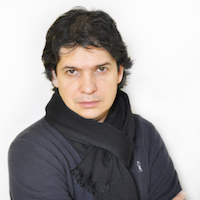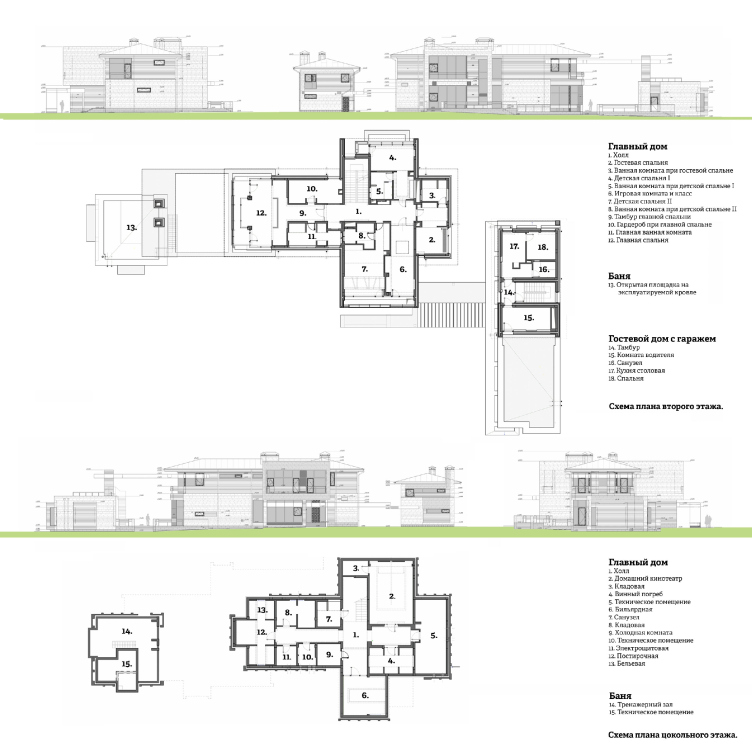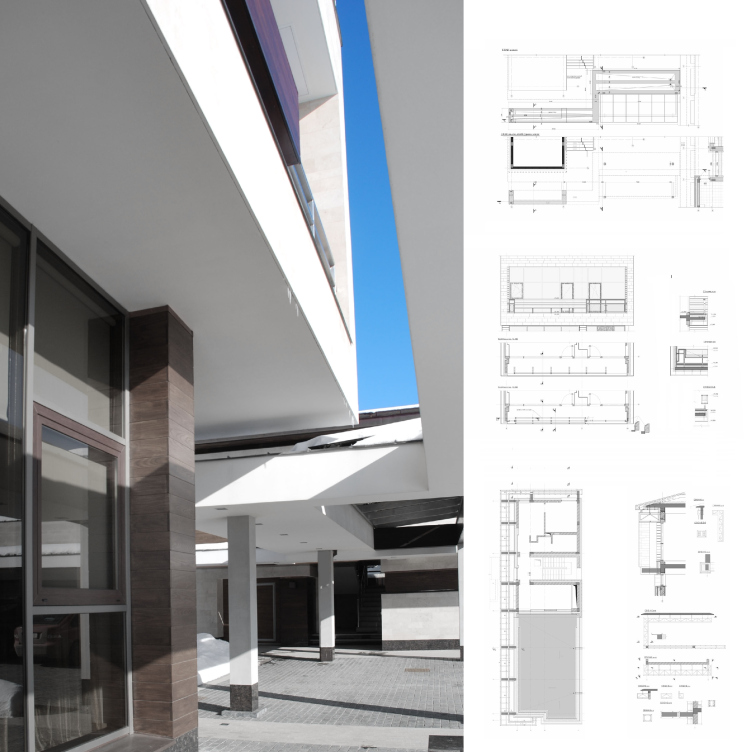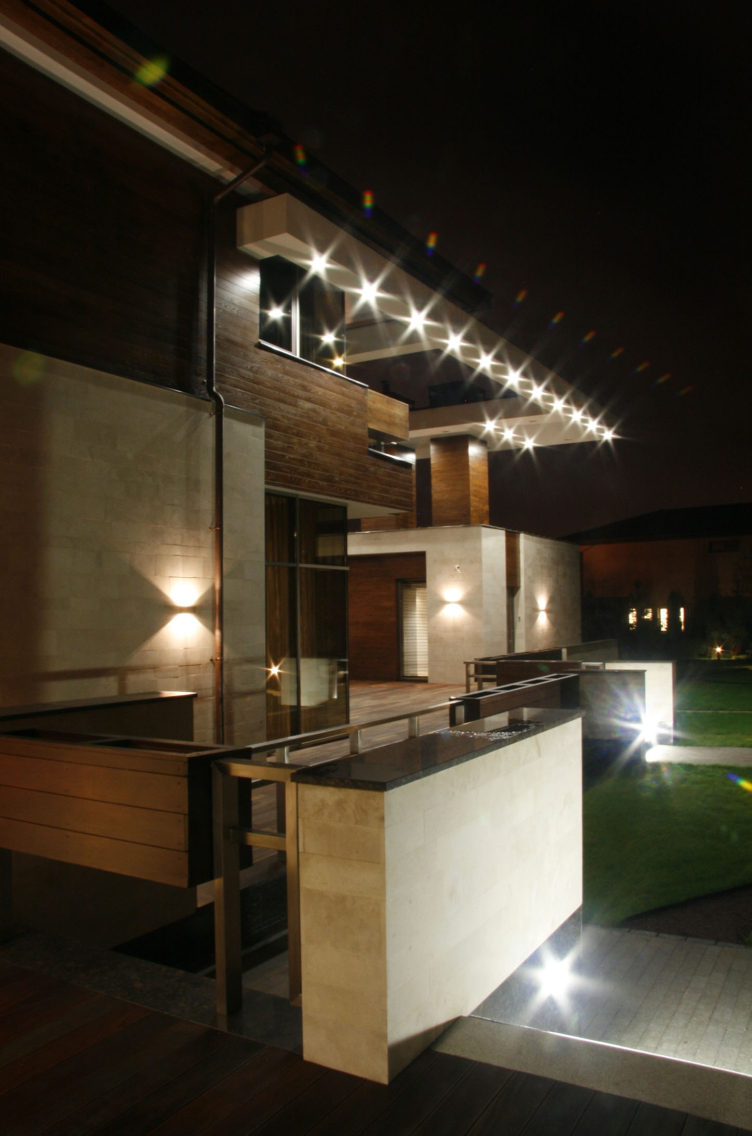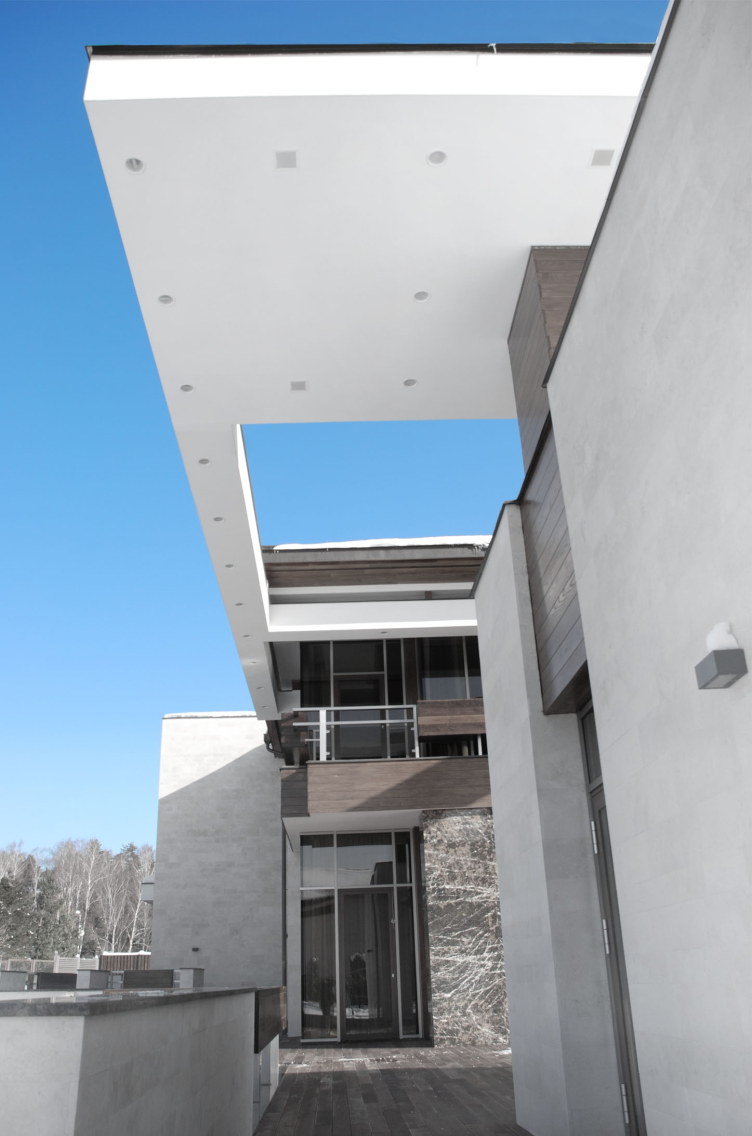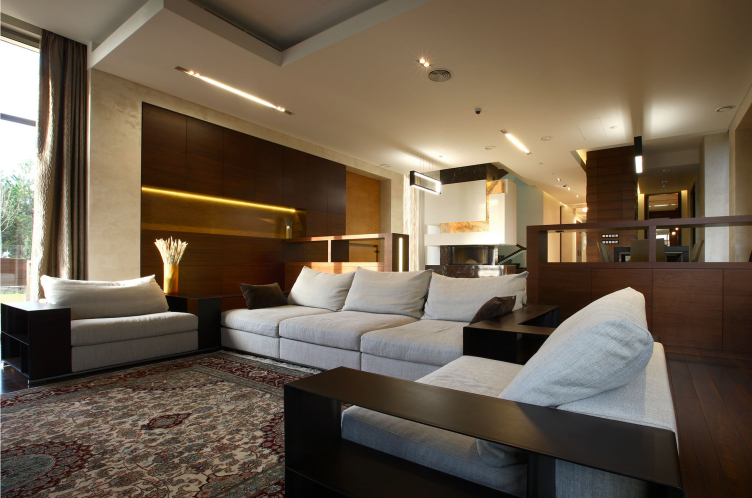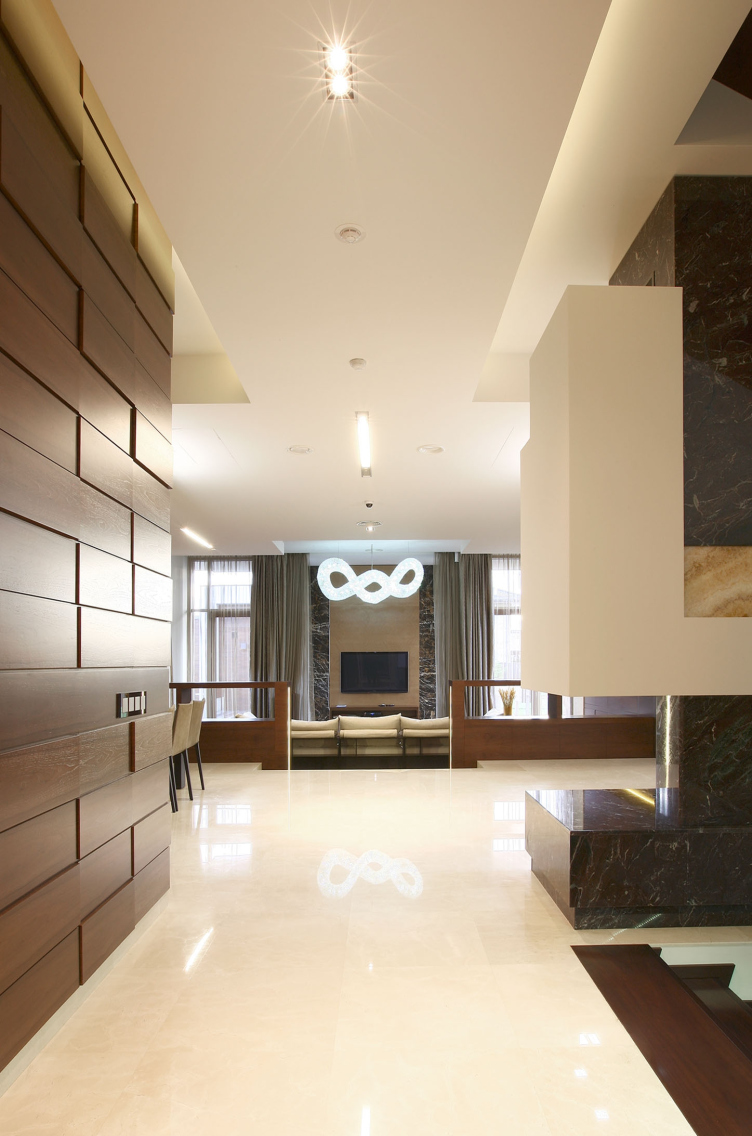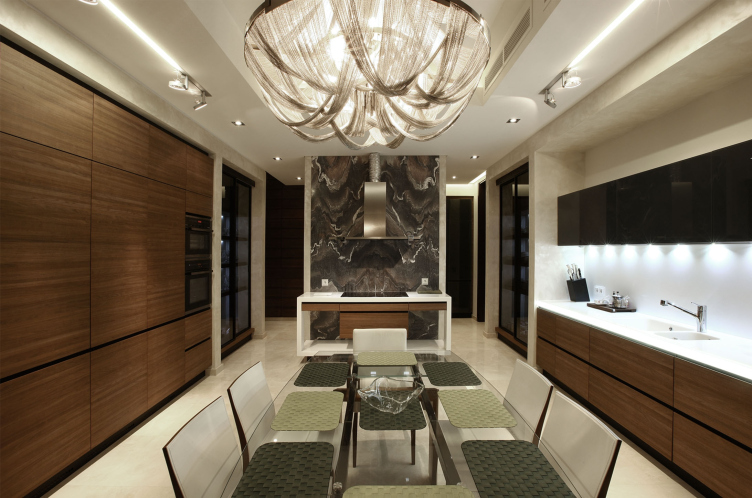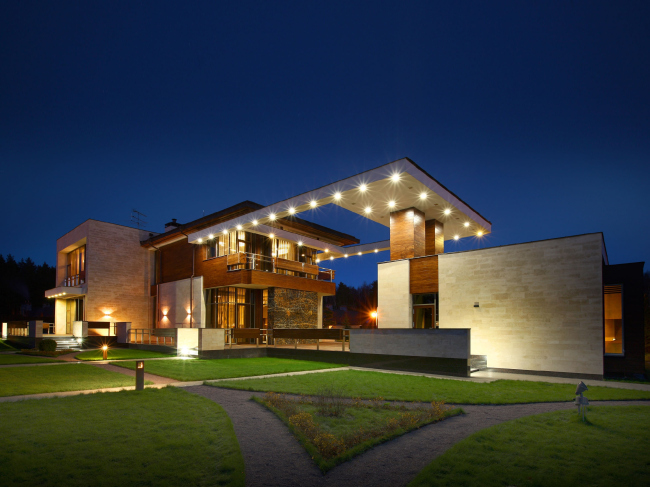
Country house in Moscow area. Night view © Fourth dimension
This country house has been built in one of the most picturesque sites in the north of Moscow area. The absolutely flat relief without so much as a hint at a height drop made the architects' task significantly easier - although, according to Mikhail Kanunnikov, one of the authors of the project, they were not after taking the line of least resistance; and looking at the entwining lines, surfaces, and volumes of the house, one certainly believes that.
The architects started working on this project back in 2008, when the future customer, upon seeing a house built by them on a neighboring site, found the authors and asked them to design a still more "outstanding" building. For such an exacting customer, "Fourth Dimension" came up with an unusual solution that still, according to the authors, turned out to be a very practical one.
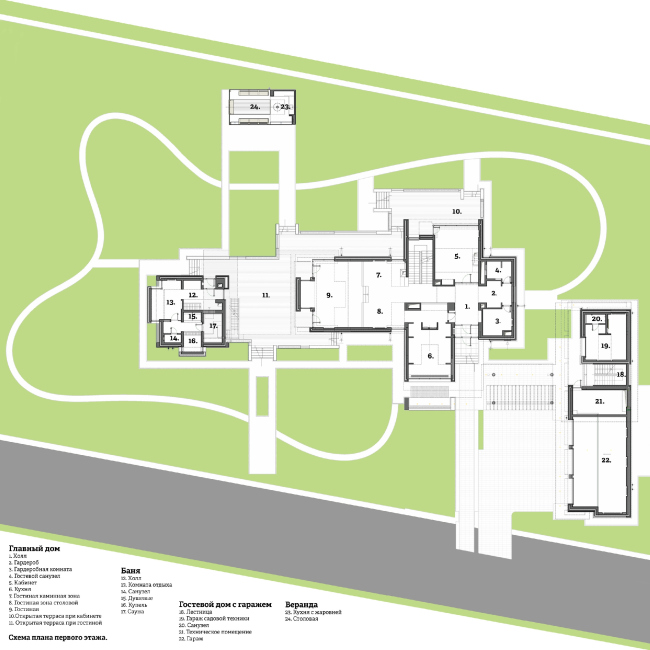
Country house in Moscow area. Plan of the first floor © Fourth dimension
The cross-shaped plan of the house falls in with the principles of Frank Lloyd Wright who insisted that at the core of any house there must be a cross - the windows are oriented to all sides, and the danger of a "dark nucleus" in the center is completely ruled out. The cross is rather conditional and asymmetric, though, in full accordance with Wright's teachings that the practical and "honest" planning should be done "from inside to outside". Thus, all the sleeves of the cross have a different length even at the second floor, while on the first floor the volume next to the billiard room is completely "cut away", and the void is turned into an open-air terrace beneath the children's room - which turns the cross-shaped figure into a intricate Tetris piece. The long "leg" of the cross on the second floor is occupied by the master's bedroom - a spacious one with a broad stanza balcony and a magnificent view over the rooftop of a small single-story bathhouse that continues the line of the leg of the conditional cross.

Country house in Moscow area. Plans of the second and the basement floors © Fourth dimension
From the opposite side, shifted a little off the main axis and even elongated sidewise perpendicular to it, there is a single-story guest house with a garage, connected to the main house by a spacious terrace and a "deconstructionist" white frame above it with a large rectangular opening. In the evenings, this rig lightens up with a multitude of spotlights and lights the territory beneath it - however, what is really interesting is the fact that higher up the flat roof of the second floor can be pulled apart, and during the rain the terrace finds itself under the roof and one can cross from the main house to the guest house without getting wet, while in the sunny weather the roof can be opened just like a car hatch. Deeper inside the plot, the architects tucked away the tiny cozy barbecue veranda.
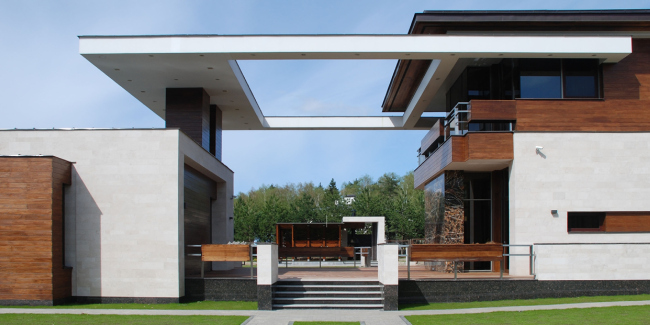
Country house in Moscow area. The complex metallic rig above the terrace between the main and the guest houses © Fourth dimension
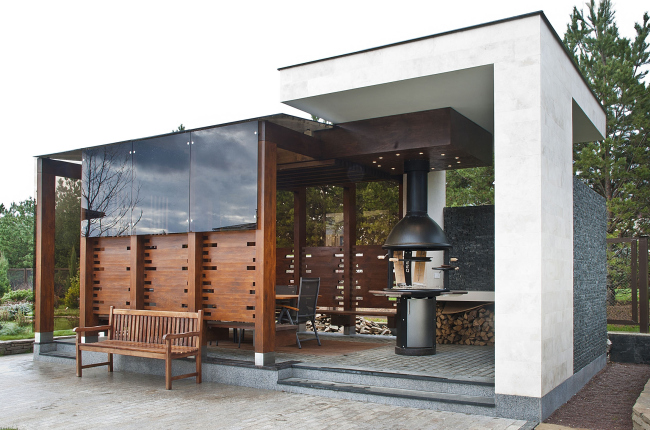
Country house in Moscow area. Barbecue spot © Fourth dimension
Described above, the pull-out roof terrace is the most vivid example of the open-air recreation area of this house - but one will be able to see a lot more similar spots of a smaller size here - under the stone and wooden awnings that seem to grow out of the very house. The slits, protrusions, and stanzas are in abundance here: the house bites into the space, and casts its large jagged protuberances into it - as if it engages in a symbiosis with it, at the same time offering to it its cubic geometrical language as a means of “inter-material” communication.
In other words, the pull-out roof is the apotheosis - but the house itself looks as if had started assembling itself, before our eyes, from several different materials - stone, white concrete, wood, and glass - and then suddenly stopped in midair, forgetting either to cuddle up or to unfold to the fullest, projecting a multitude of parallelepipeds of all shapes and sizes. All these weird shapes are functionally justified - as the authors explain, each block of the main house - i.e. each of the "sleeves" of its cross is designed for a particular family member (two children, the parents, and the guests) . The windows of the residential blocks do not face their neighbors, they only command beautiful views, avoiding even the fences and nearby construction sites - so there is not much need for curtains that will only get in the way of the guests enjoying the scenery. Oh, by the way, each room here has its own exit to this or that terrace.
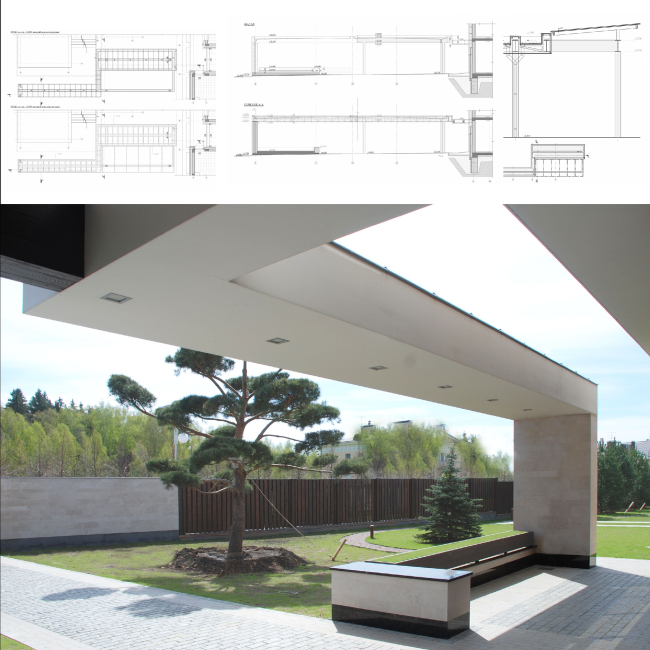
Country house in Moscow area. Open air terraces and recreation zones © Fourth dimension
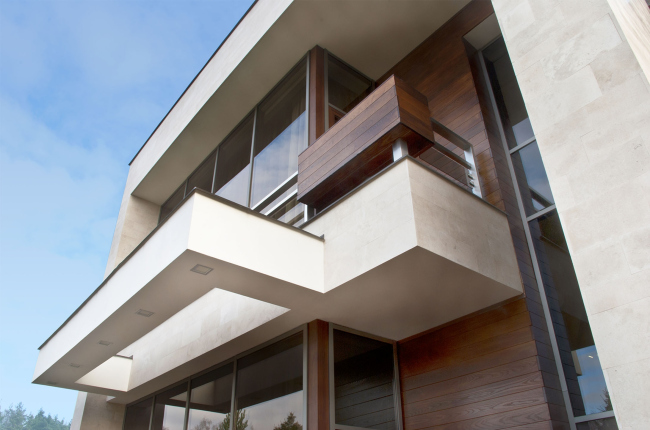
Country house in Moscow area. Numerous cantilevers, awnings, and balconies © Fourth dimension

Country house in Moscow area © Fourth dimension
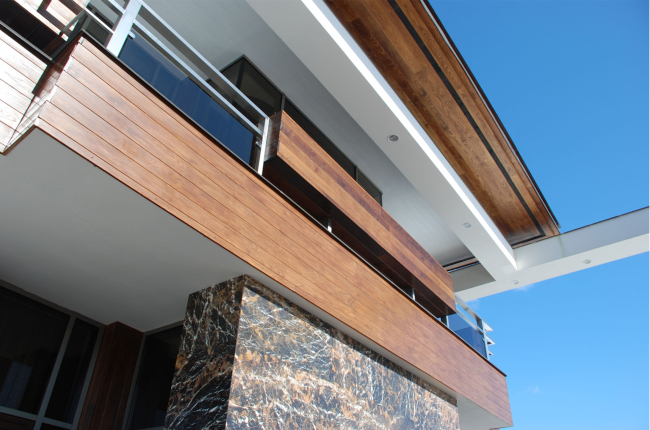
Country house in Moscow area. Fragment of dark natural stone © Fourth dimension
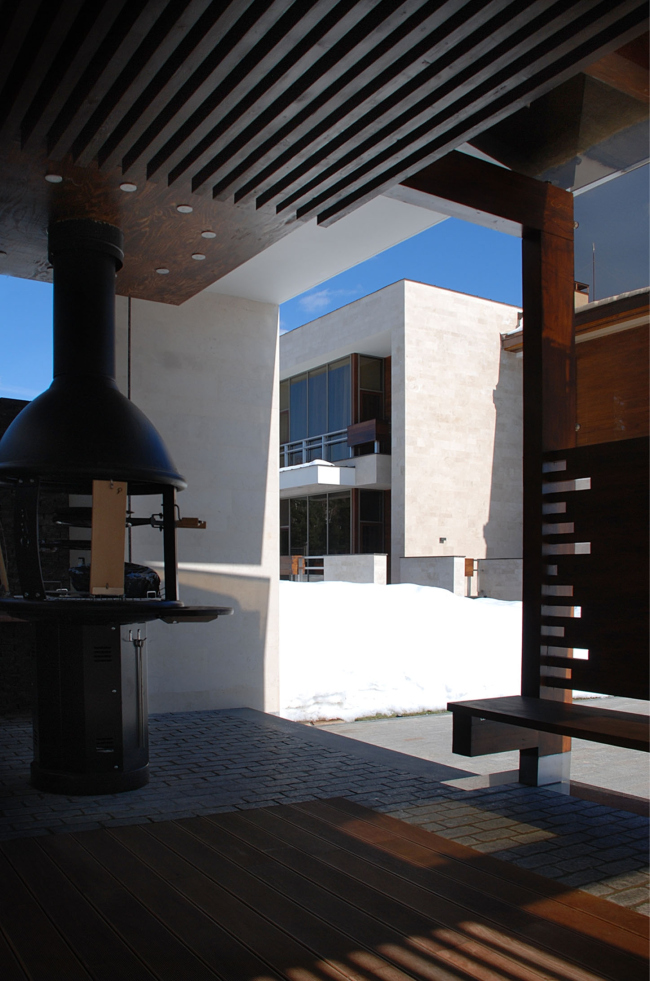
Country house in Moscow area. Open air terraces and recreation zones © Fourth dimension

Country house in Moscow area © Fourth dimension
For decorating the house, it was decided to use predominantly local materials: wood and natural stone. To get the sandstone, the architect set out to one of the old quarries that, as the legend has it, was there as early as in the times when the Church of the Intercession on the Nerl was built. The sandstone and wood decorate the building's blind walls that contrast with the transparent ones glazed from wall to ceiling. The central accent of the decoration is the "island wall" of dark natural stone that is turned onto the main (yes, the main one under the pull-out roof) terrace between the houses. The stone, contrastingly backlit from all sides, symbolizes the family hearth.

Country house in Moscow area © Fourth dimension
The multilayer character of the facades is repeated in the interiors of the house. The custom-designed in-built furniture becomes the building's second skin and replicates the pattern of the outside walls on the inside. There are no redundant partitions; the premises smoothly flow into one another - Wright again! - the hall bleeds into the dining-room, the dining-room - into the fireplace room, the fireplace room - into the drawing room, from which one can exit onto the terrace and then find his way into the garage. If one is going to encounter any "borders", then these are to be found on the first floor, made of glass, transparent, and quite unobtrusive. One can easily "run through" the house from end to end, through the length and breadth of it, coming up with ever new locomotion routes. It is because of this that the owner's children called this house a "labyrinth".

Country house in Moscow area. Drawing room © Fourth dimension

Country house in Moscow area. Interior design © Fourth dimension
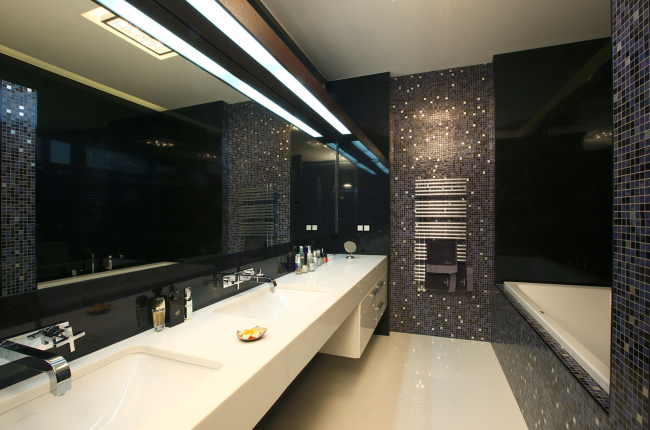
Country house in Moscow area. Bathroom design © Fourth dimension

Country house in Moscow area. Dining room © Fourth dimension
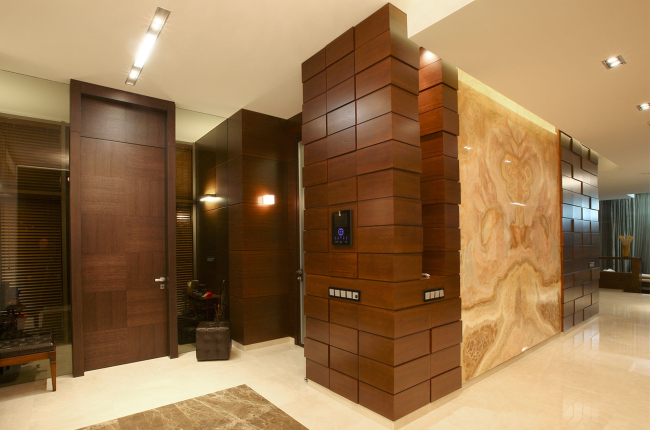
Country house in Moscow area. Bathroom design © Fourth dimension
By the way, the theme of "family hearth" comes up here once again - this time in connection with the real fireplace, around which the attention is inevitably concentrated when the hearth is surrounded by the zigzag layers of stone, including the semitransparent onyx, glowing against the fire. Or at the places where the dark glass above the fireplace is turned into a multimedia screen.
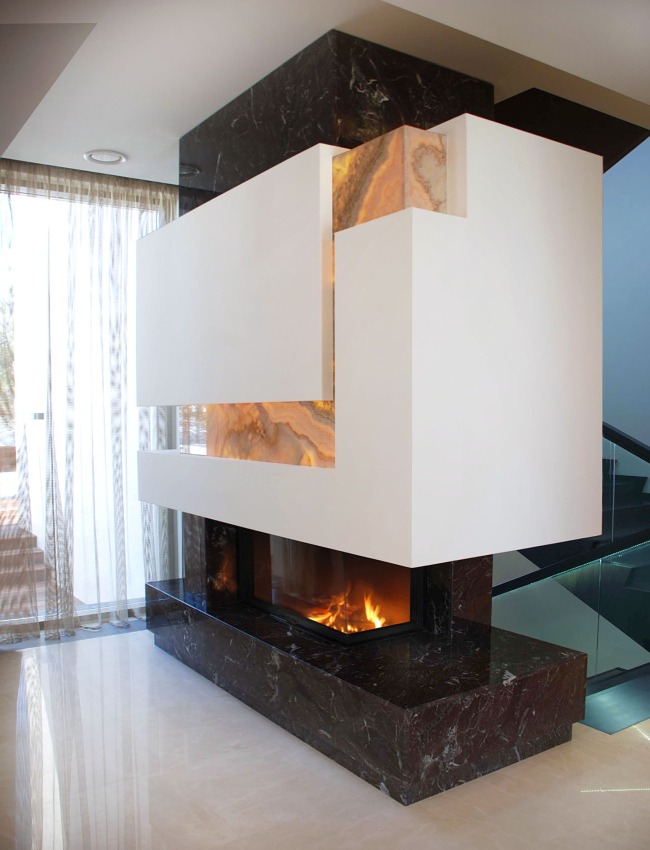
Country house in Moscow area. Fireplace room © Fourth dimension
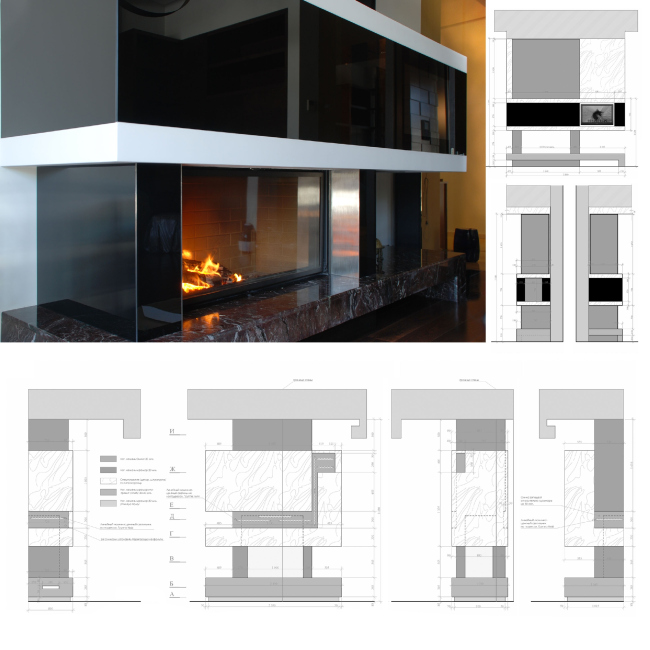
Country house in Moscow area. The dark glass above the fireplace is used as a multimedia screen © Fourth dimension
Apart from the spacious and sunlit first floor, the house provides a more private layout on the second level that cozily houses a few bedrooms, a game room, and a children's room. In the basement, there is a full-scale movie theater, and presently, the construction of a swimming pool is being completed.
Sharing about his project, Mikhail Kanunnikov repeatedly stressed that minimalism is what this house is all about, as well as pragmatism and the keen attention to detail: "more function, less decoration". And even - "house with a man's character". Meaning - a house that is sturdy, a house with integrity, and a bit gnarled at times; one that appreciates the technical novelties but at the same time not alien to the roughness of the "wild" stone. And still, apart from the certain austerity in details, there is one more peculiarity to it - with all of its terraces, the house sports a very "southern" look, one of a house open to the life in the wild, and because of this, in spite of all of its masculine qualities (or maybe even thanks to them), a look of a house that is very warm - like a villa on a seaside.
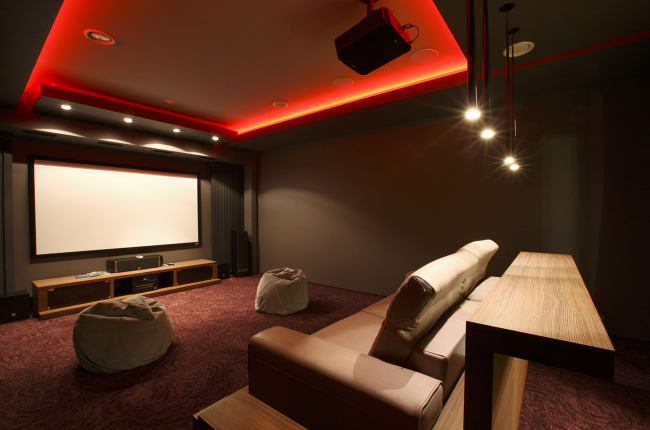
Country house in Moscow area. Movie theater © Fourth dimension
Подмосковный загородный дом. Ночной вид ©Четвертое Измерение
Country house in Moscow area. Plan of the first floor © Fourth dimension
Country house in Moscow area. Plans of the second and the basement floors © Fourth dimension
Country house in Moscow area. The complex metallic rig above the terrace between the main and the guest houses © Fourth dimension
Country house in Moscow area. Open air terraces and recreation zones © Fourth dimension
Country house in Moscow area. Barbecue spot © Fourth dimension
Country house in Moscow area. Numerous cantilevers, awnings, and balconies © Fourth dimension
Country house in Moscow area © Fourth dimension
Country house in Moscow area. Fragment of dark natural stone © Fourth dimension
Country house in Moscow area. Open air terraces and recreation zones © Fourth dimension
Country house in Moscow area © Fourth dimension
Country house in Moscow area © Fourth dimension
Country house in Moscow area. Drawing room © Fourth dimension
Country house in Moscow area. Interior design © Fourth dimension
Country house in Moscow area. Bathroom design © Fourth dimension
Country house in Moscow area. Dining room © Fourth dimension
Country house in Moscow area. Bathroom design © Fourth dimension
Country house in Moscow area. Fireplace room © Fourth dimension
Country house in Moscow area. The dark glass above the fireplace is used as a multimedia screen © Fourth dimension
Country house in Moscow area. Movie theater © Fourth dimension




